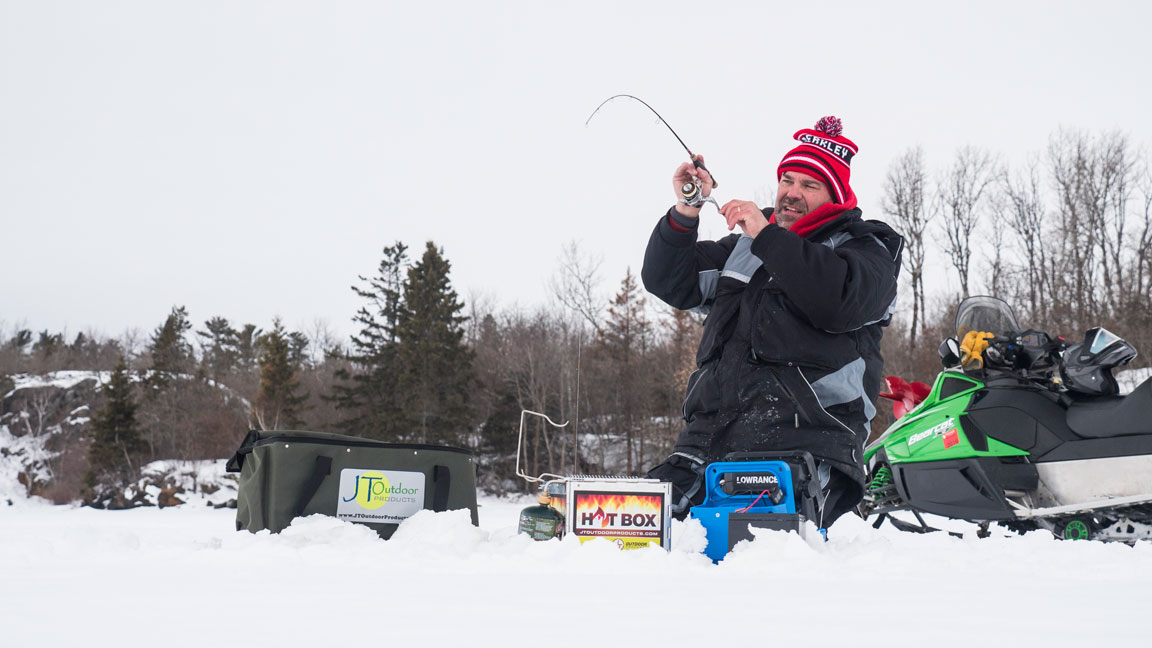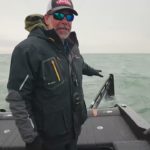Late Winter Bites
Late Winter Bites
By Gary Parsons and Keith Kavajecz
There are hundreds of lakes to catch walleyes on in the winter, but in February the bite traditionally slows down on a lot of them. This isn’t to say that the bite is non-existent, but it usually gets tougher.
There are a few exceptions to this rule. If you are looking to take a late winter vacation to a walleye destination, you have several options to consider. The one thing you will notice about each of these lakes is that every single one is big and has a good population of fish. That competitive nature is important to keep the bite going until ice out.
First up is Lake of the Woods, which always has a good sauger bite and generally the walleye bite is exceptional also. A trip to Lake Winnipeg in Ontario can also produce big walleyes at this time and often has good ice into the end of March.
Devil’s Lake in North Dakota can be a great late winter option where you will find a lot of action. In addition to walleyes, there are great perch fishing opportunities. There are also a lot of great guides on this lake. The Perch Patrol is one that we would recommend.
The best winter walleye destination in the world is Lake Erie. The only drawback is that that it doesn’t freeze every year. If it does freeze over, use extreme caution to be sure the ice is safe enough to venture out on. Always wear a Clam Outdoors’ IceArmor Lift Suit and bring a Nebulus floatation device, as conditions can change quickly.
Often in mid-February the use of tip-ups slows down and jigging techniques take over. This is why we like using the JT Outdoors Hot Box and Snare Rod combination to set up a remote jigging station. This hole should be about 20-30 feet from your shack.
 You will need a depth finder in this hole that is zoomed in so you can keep an eye on it while you jig. Another option is for the remote depth finder to have Wi-Fi streaming available. You can find this in the Lowrance HDS units or the Elite Ti units. These units will stream the fish finder screen and you can watch it in your shack on your phone or notepad.
You will need a depth finder in this hole that is zoomed in so you can keep an eye on it while you jig. Another option is for the remote depth finder to have Wi-Fi streaming available. You can find this in the Lowrance HDS units or the Elite Ti units. These units will stream the fish finder screen and you can watch it in your shack on your phone or notepad.
Like a tip-up, the fish will come up to the bait to investigate, but then they need to be provoked to bite. If we see a fish approaching the bait on the remote fish finder we can run out and start jigging for it. This makes what would normally be a slow time frame turn into a fishing trip with a lot of action and usually a lot more fish that are caught.
If you are unable to take a late winter trip to one of these walleye destinations, February is the time of year to visit a local lake for crappies because the bite is usually on fire!
Most of the time you will find them suspended or close to bottom, but not right on bottom. You will want to look for deeper holes in the lake, usually somewhere between 20 and 40 feet down.
While crappies will roam and you can bump into schools over a flat, they often concentrate in places where a mud bottom runs into a hard bottom drop off. Even though they are suspended, they like soft bottoms and relate to these transitions like a walleye relates to a weed line.
We start out by drilling up to 40 holes with our ION X. This battery-operated auger can cut up to 1600 inches of ice on a single charge. At only 22lbs, this drill is lightweight and fast!
By having so many holes drilled, we can keep going from hole to hole to put our depth finder down and look for fish. If we don’t mark any, we just move on to the next hole.
We rarely use live bait any more for crappies, as they can usually be teased with plastics. The Berkley PowerBait Ice Swordtail and Action Waxy are new ice fishing plastics that hit the market this year and are absolutely deadly. Gary worked with the guys at Berkley during the testing phase of these baits and he felt that they out-fished any of the other plastics that he’s used in the past. We like to pair them up with a small tungsten jig like the Clam Dingle Drop XL.
You will want to thread the Swordtail and the Action Waxy on the jig so it looks like it is straight. If the fish are suspended, lower it down to just above the school. Once you stop lowering it, they will come up and bust it.
If they just rise slowly, play a game of cat and mouse. Rise and stop, rise and stop. Just keep playing with them until they bite. Crappies are smart and will get used to your presentation pretty fast. If they lose interest, it is time to move on to another hole. By the time you make your way back to the first hole they will be ready to go again and you are sure to get your Next Bite!





